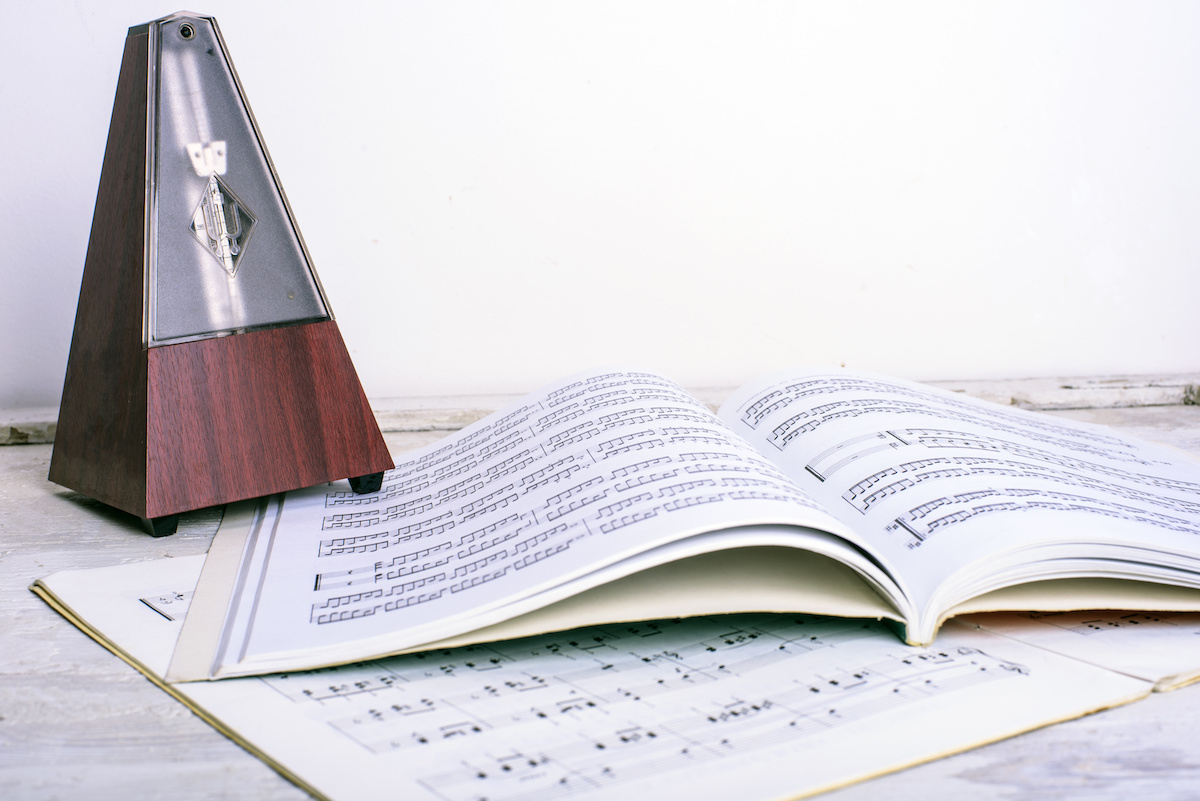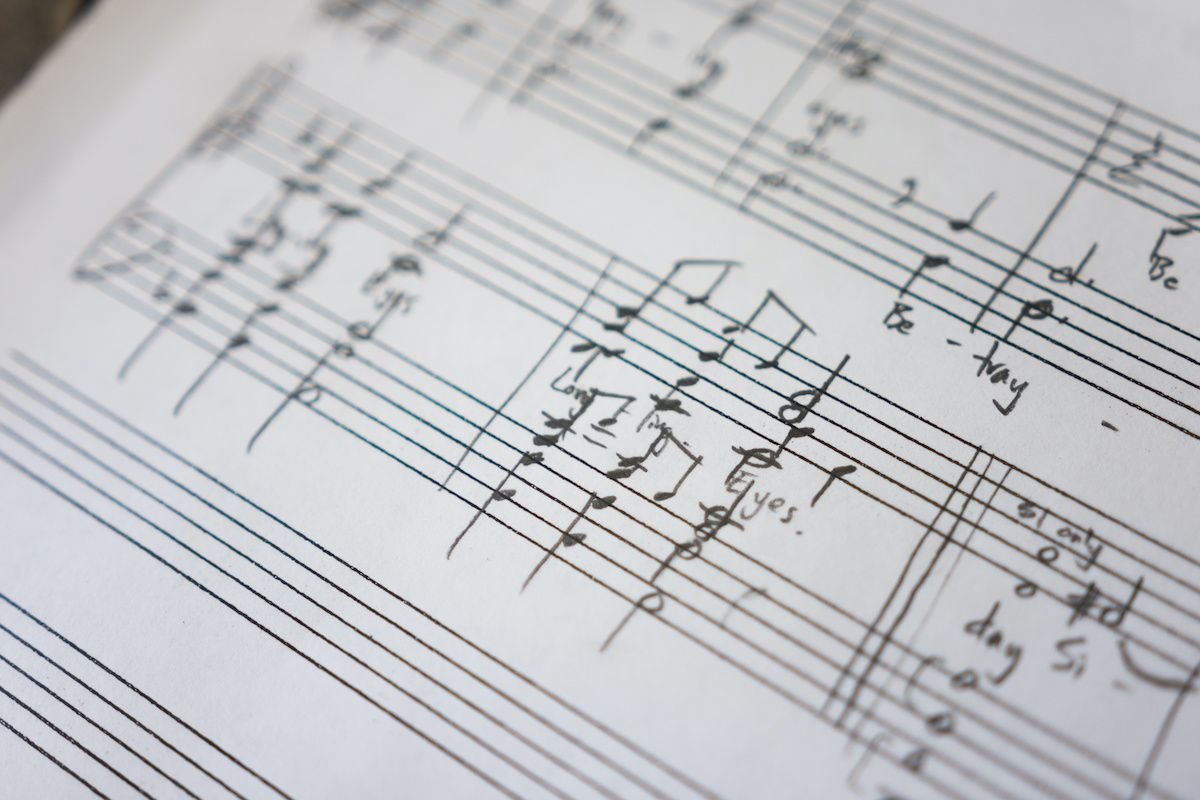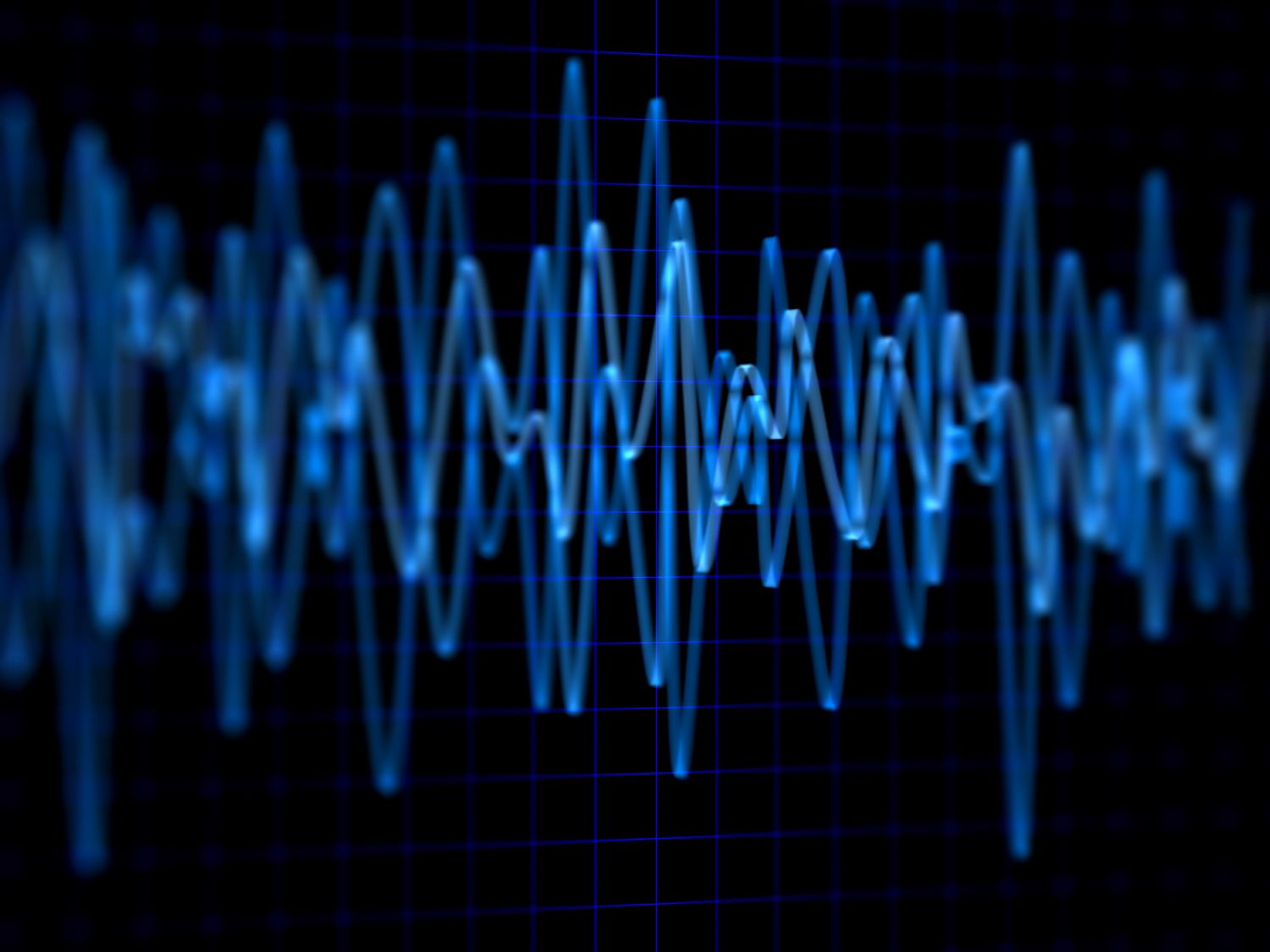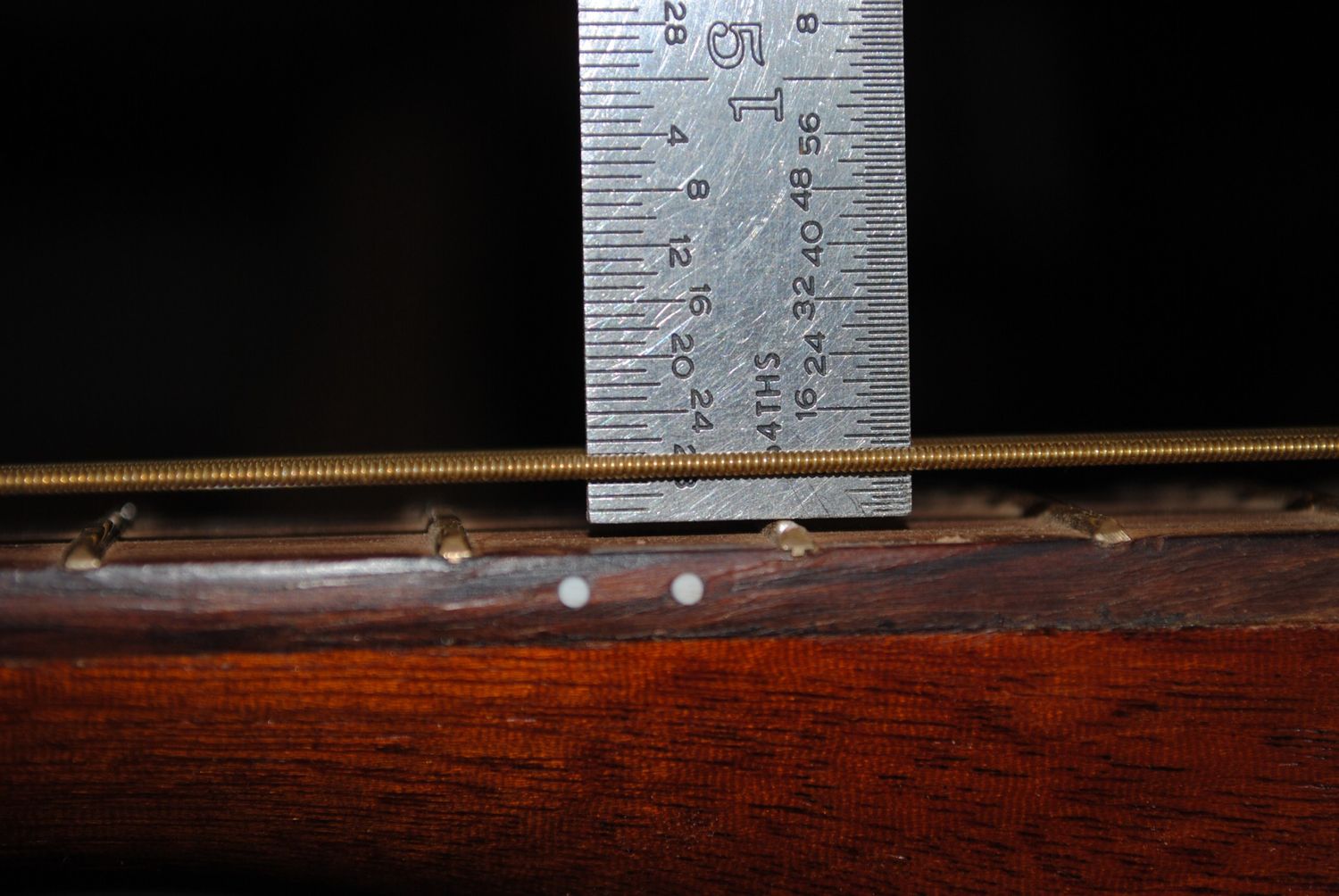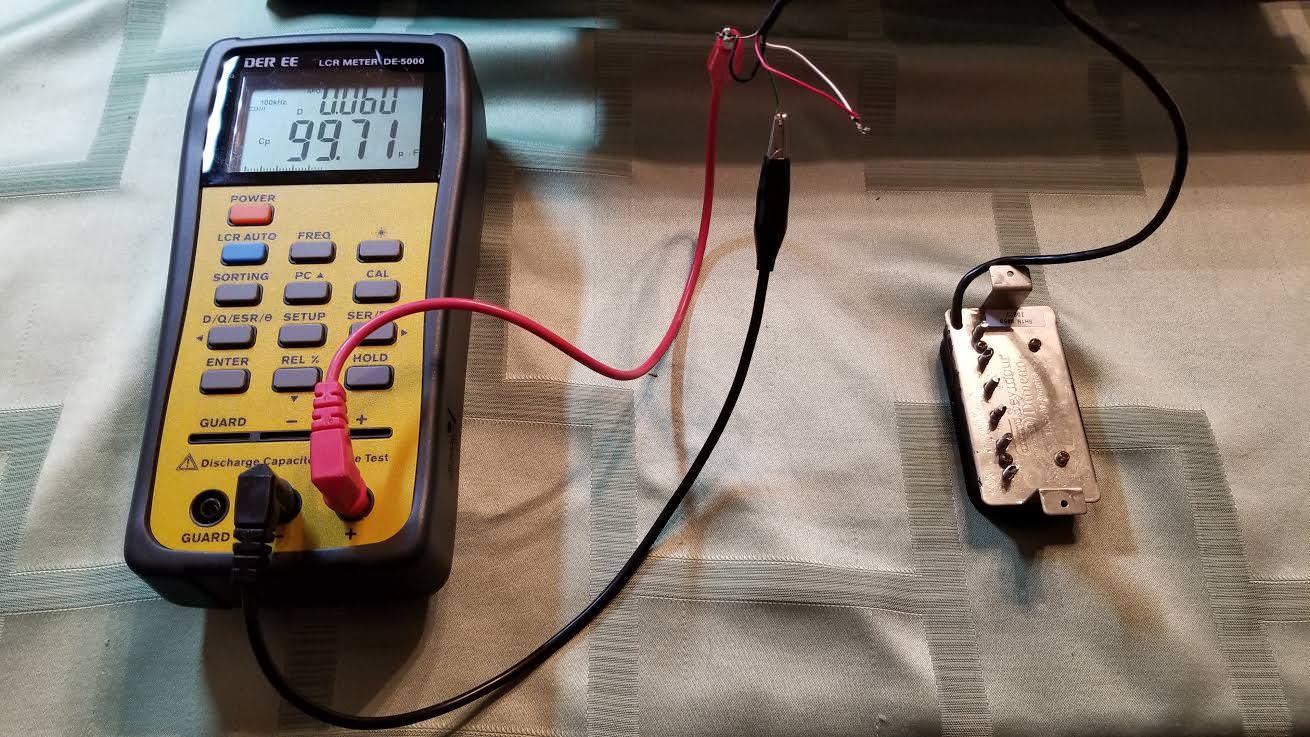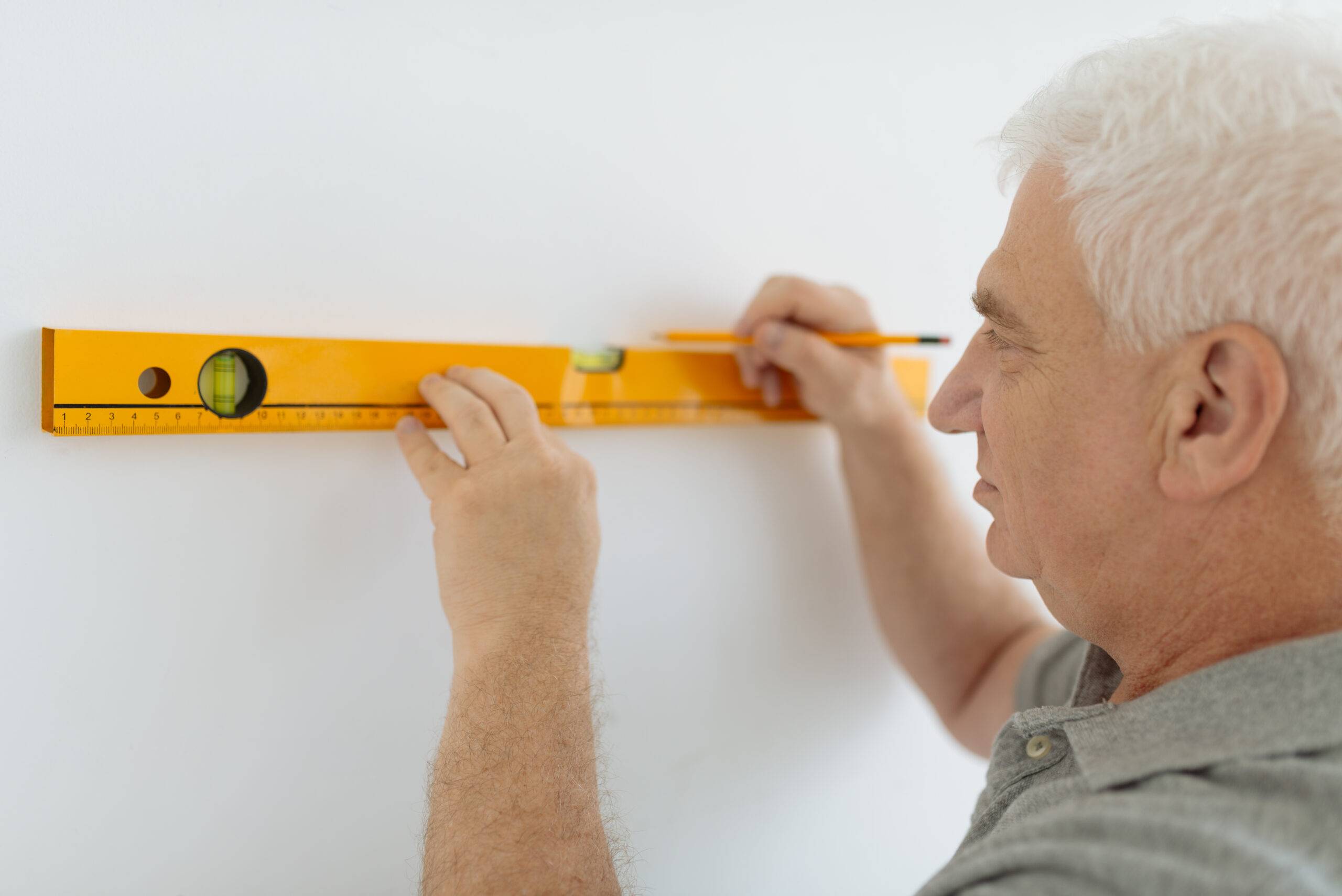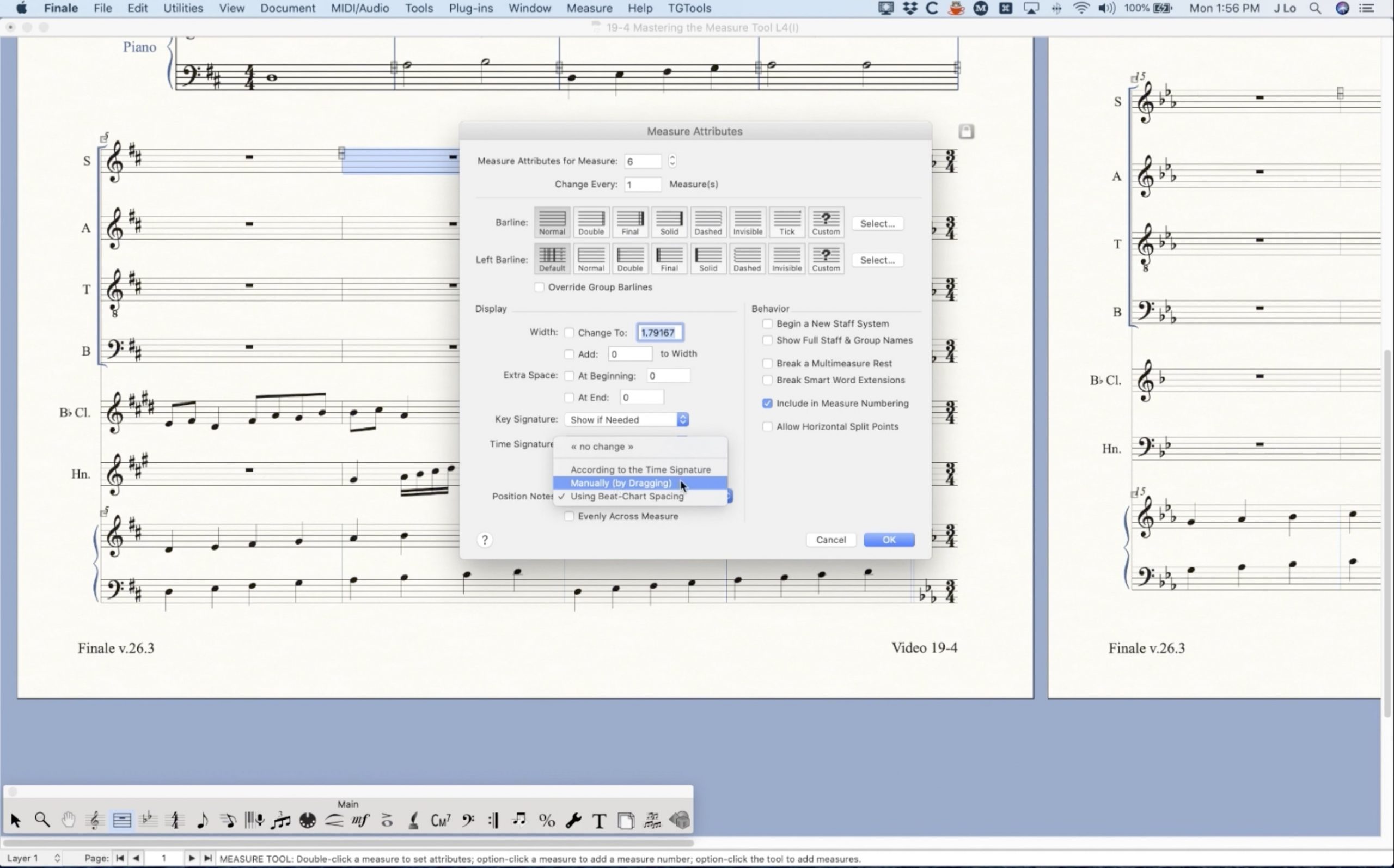Home>Production & Technology>Sound>How To Measure Sound Frequency


Sound
How To Measure Sound Frequency
Modified: January 22, 2024
Learn how to measure sound frequency and analyze the different aspects of sound with our comprehensive guide. Understand the fundamentals of sound and discover the tools and techniques needed for accurate measurements.
(Many of the links in this article redirect to a specific reviewed product. Your purchase of these products through affiliate links helps to generate commission for AudioLover.com, at no extra cost. Learn more)
Table of Contents
- Introduction
- Understanding Sound Frequency
- Basic Concepts of Sound Frequency Measurement
- Different Methods for Measuring Sound Frequency
- Choosing the Right Equipment for Sound Frequency Measurement
- Steps to Measure Sound Frequency
- Interpreting and Analyzing Sound Frequency Data
- Troubleshooting Common Issues in Sound Frequency Measurement
- Conclusion
Introduction
Welcome to the fascinating world of sound frequency measurement! Sound frequency is an essential parameter in understanding and analyzing audio signals. Whether you’re an audio engineer, a musician, or simply curious about sound, knowing how to measure sound frequency is a valuable skill that can enhance your understanding and appreciation of the audio world.
Sound frequency refers to the number of times a sound wave cycles per second and is measured in Hertz (Hz). It determines the pitch of a sound, with higher frequencies associated with higher-pitched sounds and lower frequencies associated with lower-pitched sounds. Measuring sound frequency can be crucial in various scenarios, such as tuning musical instruments, diagnosing audio issues, or optimizing sound systems.
In this article, we will dive into the intricacies of sound frequency measurement, exploring the basic concepts, different methods, and the equipment required for accurate measurements. We will also guide you through the steps of measuring sound frequency and interpreting the data obtained. Additionally, we will address common troubleshooting issues that you may encounter during the measurement process.
Before we delve deep into the specifics, it’s important to note that this article assumes a basic understanding of sound and audio concepts. If you are new to the topic, we recommend familiarizing yourself with the fundamentals of sound waves, frequency, and the physics behind them. This will provide a solid foundation for grasping the principles and techniques discussed throughout this article.
So, whether you’re an audio enthusiast looking to expand your knowledge or a professional seeking to improve your sound engineering skills, let’s embark on this journey of sound frequency measurement and discover the wonders that lie within the realm of audio waves.
Understanding Sound Frequency
Before we delve into the intricacies of measuring sound frequency, it’s important to have a clear understanding of what exactly sound frequency is. Sound is a form of energy that travels in waves, and frequency is a key characteristic of those waves.
Sound frequency refers to the number of cycles a sound wave completes in one second. It is measured in Hertz (Hz), with one Hertz representing one cycle per second. The higher the frequency, the shorter the wavelength and the higher the pitch of the sound. Alternatively, lower frequencies have longer wavelengths and sound lower in pitch.
Humans can hear sounds within a specific range of frequencies, typically ranging from 20 Hz to 20,000 Hz. This range is often referred to as the audible frequency range. Different animals have different ranges of hearing, with some able to detect much higher or lower frequencies than humans.
Sound frequency is closely related to musical notes. In the Western musical scale, the highest note, commonly known as C8, has a frequency of approximately 4,186 Hz, while the lowest note, C0, is around 16.35 Hz. The notes in between cover a wide range of frequencies, each having a distinct pitch.
Understanding sound frequency is essential in various fields, from music production and audio engineering to speech analysis and industrial applications. By analyzing the frequency content of a sound, we can gain valuable insights into its characteristics and make informed decisions about audio processing and enhancement.
In the next sections, we will explore the fundamentals of measuring sound frequency and the various methods and equipment used to accomplish this important task. So, let’s continue our journey into the world of sound frequency measurement!
Basic Concepts of Sound Frequency Measurement
When it comes to measuring sound frequency, there are a few key concepts that you should familiarize yourself with. These concepts will help you understand the principles behind sound frequency measurement and lay the groundwork for accurate and meaningful results.
Firstly, it’s important to recognize that sound is a complex waveform that consists of multiple frequencies. This collection of frequencies is known as the sound’s frequency spectrum. By analyzing the frequency spectrum, we can identify the individual frequencies present in the sound and their respective amplitudes.
Next, we have the concept of the fundamental frequency. The fundamental frequency refers to the lowest frequency component in a sound. It is the primary frequency that determines the perceived pitch of the sound. For example, in a musical note, the fundamental frequency is the frequency of the note itself.
Harmonics are another crucial element in understanding sound frequency measurement. Harmonics are frequencies that are integer multiples of the fundamental frequency. They give a sound its unique timbre or tone quality. For example, when playing a note on a musical instrument, the harmonics are what differentiate the sound of that instrument from other instruments playing the same note.
Another essential concept is the concept of bandwidth. The bandwidth refers to the range of frequencies present in a sound. It provides valuable information about the richness and complexity of the sound. A wider bandwidth indicates a more complex sound with a broader range of frequencies.
Lastly, it’s important to consider the concept of resolution. Resolution refers to the level of detail or accuracy in capturing and representing the frequency content of a sound. Higher resolution allows for more precise measurement and analysis of individual frequency components.
By understanding these basic concepts, you can approach sound frequency measurement with a clear understanding of the underlying principles. In the next sections, we will explore the different methods and equipment used for measuring sound frequency, empowering you to choose the right approach for your specific needs.
Different Methods for Measuring Sound Frequency
When it comes to measuring sound frequency, there are several methods available, each with its own strengths and limitations. The choice of method depends on factors such as the desired accuracy, the nature of the sound source, and the available equipment. Let’s explore some of the commonly used methods for measuring sound frequency:
- Using a frequency counter: A frequency counter is a device specifically designed for measuring the frequency of an input signal. It provides an accurate and straightforward method for measuring sound frequency. By connecting the sound source to the frequency counter, the device will display the precise frequency of the input signal.
- Using a spectrum analyzer: A spectrum analyzer is a powerful tool for analyzing the frequency content of a sound. It displays the frequency spectrum of a sound signal, allowing you to visualize the distribution of frequencies. Spectrum analyzers are widely used in audio engineering and research to measure and analyze sound frequency in real-time.
- Using a digital audio workstation (DAW): A DAW is a software application used for recording, editing, and mixing audio. Many DAWs come equipped with built-in frequency analysis tools that allow you to measure the frequency of a sound within the software itself. This method is convenient for analyzing recorded sounds or working with digital audio files.
- Using smartphone apps: In the digital age, there are numerous smartphone apps available that can measure sound frequency. These apps use the device’s microphone to capture the sound and provide frequency analysis. While not as accurate as dedicated measurement devices, smartphone apps can still be useful for quick and basic frequency analysis.
- Using an oscilloscope: An oscilloscope is a device that displays the waveform of an electrical signal. It can also be used to measure sound frequency by connecting the sound source to the oscilloscope’s input. By analyzing the waveform displayed on the oscilloscope, you can determine the frequency of the sound.
Each method has its own advantages and limitations, and the choice of method depends on the specific requirements of your sound frequency measurement task. Factors such as accuracy, portability, real-time analysis, and budget will influence your decision. It’s worth considering the nature of your sound source and the available equipment when selecting the most suitable method.
Now that we have explored the different methods for measuring sound frequency, let’s move on to the next section, where we will discuss how to choose the right equipment for sound frequency measurement.
Choosing the Right Equipment for Sound Frequency Measurement
When it comes to measuring sound frequency, having the right equipment is crucial for accurate and reliable results. The choice of equipment depends on various factors, including the level of precision required, the intended application, and the available budget. Let’s explore some of the key considerations when choosing equipment for sound frequency measurement:
Frequency Range: Consider the frequency range of the equipment you are considering. Ensure that it covers the desired range of frequencies you wish to measure. For example, if you are working with ultrasonic frequencies, make sure the equipment has the capability to measure frequencies in that range.
Accuracy and Resolution: Check the accuracy and resolution specifications of the equipment. The higher the accuracy and resolution, the more precise and detailed your frequency measurements will be. Keep in mind that higher accuracy and resolution generally come at a higher cost.
Portability: Decide whether portability is a key requirement for your specific application. If you need to carry the equipment to different locations or work in remote settings, consider options that are lightweight and portable.
Real-Time Analysis: If you require real-time analysis of sound frequency, look for equipment that provides immediate and continuous measurement feedback. Devices such as spectrum analyzers or software with real-time frequency analysis capabilities would be ideal for such applications.
Budget: Determine your budget constraints and search for equipment that fits within your budget. Keep in mind that high-end professional equipment may come at a higher cost but often offers more advanced features and greater accuracy.
Compatibility and Connectivity: Ensure that the equipment you choose is compatible with your existing setup or the devices you intend to connect to. Check for compatibility with the necessary cables, connectors, and software interfaces.
User-Friendly Interface: Consider the usability and ease of operation of the equipment. Look for devices with intuitive interfaces and clear display screens that make it easy to understand and interpret the frequency measurements.
Reviews and Recommendations: Before making a final decision, read reviews, seek recommendations from professionals in the field, or consult with audio experts who have experience with sound frequency measurement. Their insights and experiences can help guide you towards reliable and effective equipment.
By carefully considering these factors, you can choose the right equipment that aligns with your specific needs and ensures accurate and precise sound frequency measurement. The next section will provide a step-by-step guide on how to measure sound frequency effectively.
Steps to Measure Sound Frequency
Measuring sound frequency requires a systematic approach to ensure accurate and reliable results. By following these step-by-step instructions, you can effectively measure the frequency of a sound:
- Select the appropriate measurement method: Choose the method that best suits your requirements, based on factors such as accuracy, real-time analysis, and available equipment.
- Prepare the measurement environment: Ensure that the measurement environment is free from excessive background noise or interference that may affect the accuracy of your measurements. Consider using sound-isolating materials or working in a quiet room for optimal results.
- Calibrate your equipment: If your equipment allows for calibration, perform a calibration process to ensure accurate readings. Calibration involves setting a reference point to compare subsequent measurements against. This helps maintain the accuracy and reliability of your measurements.
- Position the equipment: Position your measurement equipment appropriately, considering factors such as distance from the sound source, microphone placement, and any necessary adjustments for directional sensitivity.
- Capture the sound: Begin capturing the sound using your chosen measurement method. Ensure that you have a steady and consistent sound source to measure, such as a musical instrument or a calibrated sound signal.
- Take multiple measurements: To enhance accuracy, take multiple measurements of the same sound source. Repeat the process a few times to gauge consistency and identify any variations.
- Analyze the frequency data: Once you have captured the sound and gathered the frequency measurements, analyze the data using your chosen analysis tool. This could involve analyzing the frequency spectrum, visualizing the frequency components, or interpreting numerical values.
- Interpret the results: Interpret the frequency data to gain insights into the characteristics of the sound. Look for the fundamental frequency, harmonics, and any other noticeable features within the frequency spectrum.
- Compare with expected values: If applicable, compare your measured frequency with the expected or desired values. This can be useful for purposes such as tuning musical instruments or identifying any deviations from expected frequencies.
- Document and store your measurements: Record and document your frequency measurements for future reference. This documentation can be valuable for analysis, troubleshooting, or comparison with future measurements.
By following these steps, you can effectively measure sound frequency and obtain reliable results. However, it’s important to note that proficiency and expertise may develop with practice and experience. Continual refinement of your measurement techniques and regular calibration of equipment will contribute to more accurate and consistent sound frequency measurements.
Now that you have successfully measured sound frequency, let’s move on to the next section, where we will explore how to interpret and analyze the frequency data you have gathered.
Interpreting and Analyzing Sound Frequency Data
Once you have collected sound frequency data, the next step is to interpret and analyze the results. By analyzing the frequency data, you can gain valuable insights into the characteristics of the sound and make informed decisions about further processing or adjustments. Here are the key steps in interpreting and analyzing sound frequency data:
- Identify the fundamental frequency: The first step is to identify the fundamental frequency, which represents the primary pitch of the sound. This is typically the highest peak or the most dominant frequency in the frequency spectrum.
- Observe harmonics and overtones: Pay attention to the presence of harmonics and overtones in the frequency spectrum. These are multiples of the fundamental frequency and contribute to the overall timbre and tone quality of the sound.
- Analyze the frequency range: Examine the full frequency range captured in the measurement. Determine the lowest and highest frequencies present in the spectrum and take note of any significant peaks or patterns throughout the frequency range.
- Assess the bandwidth: Evaluate the bandwidth of the sound, which refers to the range of frequencies present. A wider bandwidth indicates a more complex and rich sound, while a narrower bandwidth may suggest a more focused or specific sound.
- Compare with reference values: If you have reference values for the expected or desired frequencies, compare your measured data with these values. Look for any discrepancies or deviations and assess whether adjustments or corrections are necessary.
- Consider context and application: Take into account the context and application of the sound. For example, in music production, analyze how the frequency content contributes to the overall mix, and determine if any EQ or processing adjustments are needed.
- Use visualization tools: Utilize visualization tools provided by your measurement equipment or software to better understand the frequency distribution. These tools can help identify patterns, outliers, or specific frequency components that may require further analysis.
- Seek expert advice if needed: If you are unsure about interpreting certain aspects of the frequency data, don’t hesitate to seek guidance from experts or experienced professionals in the field. Their insights and expertise can help you make sense of complex frequency patterns or address any ambiguities.
By following these steps, you can effectively interpret and analyze sound frequency data. This analysis will provide valuable information about the sound and guide your decision-making process for further audio processing or adjustments.
Now that we have explored the process of interpreting and analyzing sound frequency data, let’s move on to the next section, where we will address common troubleshooting issues that may arise during sound frequency measurement.
Troubleshooting Common Issues in Sound Frequency Measurement
While measuring sound frequency, you may encounter several common issues that can affect the accuracy and reliability of your measurements. Understanding these issues and knowing how to troubleshoot them can help ensure more accurate and consistent results. Let’s explore some of the common issues in sound frequency measurement and possible troubleshooting steps:
- Background noise: Excessive background noise can interfere with the accuracy of your measurements. To mitigate this issue, try to minimize noise in the environment by working in a quiet room or using sound-isolating materials.
- Interference and distortion: External interference or distortion can introduce artifacts into your frequency measurements. Check for potential sources of interference, such as nearby electronic devices, and relocate or shield your measurement equipment accordingly.
- Improper microphone placement: Placing the microphone incorrectly can result in inaccurate frequency measurements. Ensure that the microphone is positioned correctly and oriented properly towards the sound source. Experiment with microphone placement to find the optimal position for accurate measurements.
- Insufficient calibration: Lack of proper calibration can lead to inaccurate readings. Make sure to calibrate your measurement equipment regularly according to the recommended guidelines. This helps maintain accuracy and consistency in your frequency measurements.
- Signal clipping: If the sound signal being measured is too loud, it can result in signal clipping, where the waveform is truncated or distorted. Adjust the input levels or attenuate the signal to avoid clipping and ensure accurate frequency measurements.
- Limited frequency range: If your equipment has a limited frequency range, it may not capture or accurately measure all the frequencies present in the sound. Ensure that your equipment has an appropriate frequency range for the specific application or sound source you are working with.
- Sampling rate limitations: In digital audio processing, inadequate sampling rates can lead to inaccuracies in frequency measurements. Ensure that your digital audio equipment or software is using a sufficient sampling rate to capture the full frequency range of the sound signal.
- Software or hardware issues: Software or hardware-related issues can also impact the accuracy of frequency measurements. Keep your equipment and software up to date, and troubleshoot any technical issues that may arise to ensure reliable and accurate frequency measurements.
By being aware of these common issues and taking proactive measures to troubleshoot them, you can optimize the accuracy and reliability of your sound frequency measurements. Regular calibration, proper equipment setup, and a thorough understanding of the measurement process will contribute to more consistent and accurate results.
Now that we have discussed common troubleshooting issues, let’s conclude our exploration of sound frequency measurement in the next section.
Conclusion
Measuring sound frequency is a fundamental and intriguing aspect of understanding and analyzing sound waves. Whether you’re an audio professional or simply passionate about the world of sound, the ability to accurately measure sound frequency provides valuable insights and opens doors to countless possibilities.
In this article, we have covered the basic concepts of sound frequency, explored different methods for measuring sound frequency, discussed the importance of choosing the right equipment, provided step-by-step instructions on how to measure sound frequency, and delved into the interpretation and analysis of frequency data. We have also addressed common troubleshooting issues that may arise during the measurement process.
By understanding sound frequency and having the necessary knowledge and tools, you can fine-tune musical instruments, diagnose audio issues, optimize sound systems, and make informed decisions about audio processing. Whether you’re tuning a guitar, analyzing speech patterns, or working on a complex audio production, sound frequency measurement plays a crucial role in achieving desired results.
Remember, accuracy and consistency in sound frequency measurement can be enhanced through proper calibration, careful equipment placement, and addressing common issues that may impact the measurement process. Additionally, seeking guidance from experts or experienced professionals can further refine your skills and understanding.
Now armed with the knowledge and techniques to measure sound frequency effectively, you can confidently navigate the world of audio and explore the beautiful intricacies of sound waves. Embrace the power of sound frequency measurement and unlock new possibilities in your audio endeavors!

